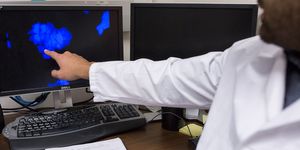The new cardiac patch technology is more than just a pacemaker, researchers from Harvard University describe in a new study published in
Nature Nanotechnology. This innovative, high-tech new option for improving heart health and preventing dangerous cardiac events is the next big thing for cardiologists everywhere.
The so-called “bionic” cardiac patch is made of engineered heart tissue designed into nanoscale electronic scaffolds. The patch is able to restore heart muscle cells when tissues are damaged during a heart attack or cardiac arrest. They contain “pre-formed tissue patches” that are at the ready when an adverse event occurs, also able to “monitor and subtly adjust its performance.”
It’s like having a focused doctor implanted in your chest who is prepared to begin the healing process as soon as necessary. In addition to acting as a pacemaker by resetting the rhythm of the heart with electrical shocks, the patch can alter heart signals’ frequency and direction, if needed.
The bionic patch is uniquely imbedded into the tissue as opposed to being on the surface, like traditional pacemakers, and its special location allows detection of arrhythmia to be faster than ever before, potentially reducing the risk of
pacemaker-related heart problems with electronic surveillance systems. Also, the patch requires lower voltages than surface pacemakers, making it an all-around safer option for improving heart health.
Cardiac events like arrhythmia can cause permanent damage to the heart muscle tissues within minutes, often before someone can get to a hospital or before an ambulance reaches them. Early detection of arrhythmias as well as the ability to fix them on their own makes the new bionic patch technology an exciting creation for the cardiology community.
In the lab, the patches can be used to test the response to and effectiveness of new cardiac drugs, a useful tactic that might be attractive to pharmaceutical companies. For other researchers interested in understanding how heart muscle tissue development changes over time, the patch is also a useful tool.
Despite the hype surrounding the new bionic patch at the moment, Harvard researchers have yet to implant and test the patch in animal models of heart disease. However, a study of a rodent model of myocardial infarction is impending. It may take a few animal trials to confirm the effectiveness and safety of the new bionic patch, but Harvard researchers are confident that the day where doctors inject a bionic patch into the heart muscle of patients with a relatively non-invasive surgery will soon come.
Sources:
Harvard University,
American Heart Association









